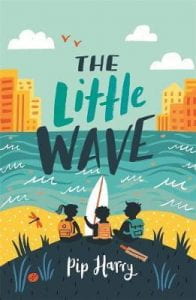My Brother Ben is a story of birds, boats and the bond brothers share. An ode to nature and a reminder that not all heroes wear capes.
Luke is a quiet boy who loves sketching birds and thanks to his Aunty Gem, is becoming an expert at recognising their calls. His big brother Ben is bold and brave as he climbs on the roof or leaps out of the huge twisted paperbark Jumping Tree into Cabbage Tree Creek.
Despite their differences, Luke and Ben stick together like Apostlebirds, especially since their father moved away. The brothers share a dream of owning their own boat to explore the channels and secret inlets of Cabbage Tree Creek. The perfect opportunity arises when the local council runs a competition to celebrate the creek and first prize is a boat.
Luke and Ben come up with a plan to win, but it is threatened when Ben starts high school and the boys begin to drift apart. When Ben and Frankie become friends, the trust the brothers share is tested, especially when Ben starts sneaking out of the house at night. Luke will discover that all is not as it seems and his brother Ben really does mean it when he says "Trust me."
Peter Carnavas captures the beauty of nature with lyrical descriptions that immerse you in the sights, sounds and life of Cabbage Patch Creek.
The cool water swallowed me and I sank until my toes dipped in the mud at the bottom. Then I rose up, floated on my back and watched the paperbark leaves dance against the sky. Ben did the same. We were two sea stars spinning slowly on the surface.
Scattered throughout the book are sketches of birds from Luke’s sketchbook. My favourites are the sketches of Luke’s magpie, Maggie in the chapter headings that remind me of the magpie family who have called my backyard their home for many years.
“When you open your eyes to birds, the world opens itself in return.” (Aunty Gem)
My magpies enjoying sunset
Here is Peter talking about his book My Brother Ben...
My Brother Ben is one of my favourite reads this year.
Thank you for the copy of this book to review UQP.











